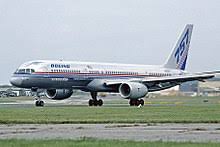FAA & EASA Order Boeing 757 Operators to Carry Out Aileron Checks
The Federal Aviation Administration (FAA) and European Union Aviation Safety Agency (EASA) issued airworthiness directives requesting all Boeing 757 operators to carry our required inspections.This drastic measures is following the report of the failure of the aileron trim actuator attachment lug.
Just a forthnight ago, EASA ordered the wings outer layer spar of first generation A380s be checked. Read here. https://aviationroundtable.blogspot.com/2019/07/cracks-trigger-a380-wing-spar.html?m=1
According to the FAA, Operators of the Boeing 757 type have to conduct “repetitive checks of the aileron trim actuator bearing for free rotation, repetitive detailed inspections of the aileron trim actuator attachment lug for damage and cracking, and applicable on-condition actions”.
The unsafe condition was reported during one of the flights, where the flight crew was limited to move the flight-control surface. The FAA AD said the following:
“The FAA received a report indicating that a flightcrew could not center the ailerons with a left or right turn on the aileron trim control wheel during a flight control check.
Maintenance personnel found that the aileron trim actuator attachment lug had broken off of its support box assembly but was still attached to the aileron trim actuator. Stress analysis found that the separation of the lug could have been the result of seizure of the aileron trim actuator bearing, which would exert forces on the attachment lug that could be higher than what it is designed for.
The lug failure resulted in a freefloating aileron trim actuator and subsequent loss of feel force, wheel centering, and lateral trim. This condition, if not addressed, could cause over-control of the airplane and subsequent lateral pilot induced oscillations (PIO), which could adversely affect continued safe flight and landing“.
After thorough considerations, the issue was determined to be likely to appear on other planes of this type as well. Thus, the inspections were requested.
The inspections were already recommended by Boeing in March. Boeing determined that the separation was likely caused by a seized actuator bearing. Thus, a redesigned component “is still in development and will be rolled out” to operators when it is ready, Boeing said. Until then, operators must do repetitive checks every 1,100 flight hours after the initial inspections.
Will these safety measure cause another global grounding? Well time will tell. Currently there are around 664 757 aircrafts in use by airlines both for commercial and cargo operations. The major operators of the aircraft are Delta Airlines with the highest number with 127, followed closely by FedEx with 119, then United and UPS with 76 and 75 respectively.





Comments
Post a Comment